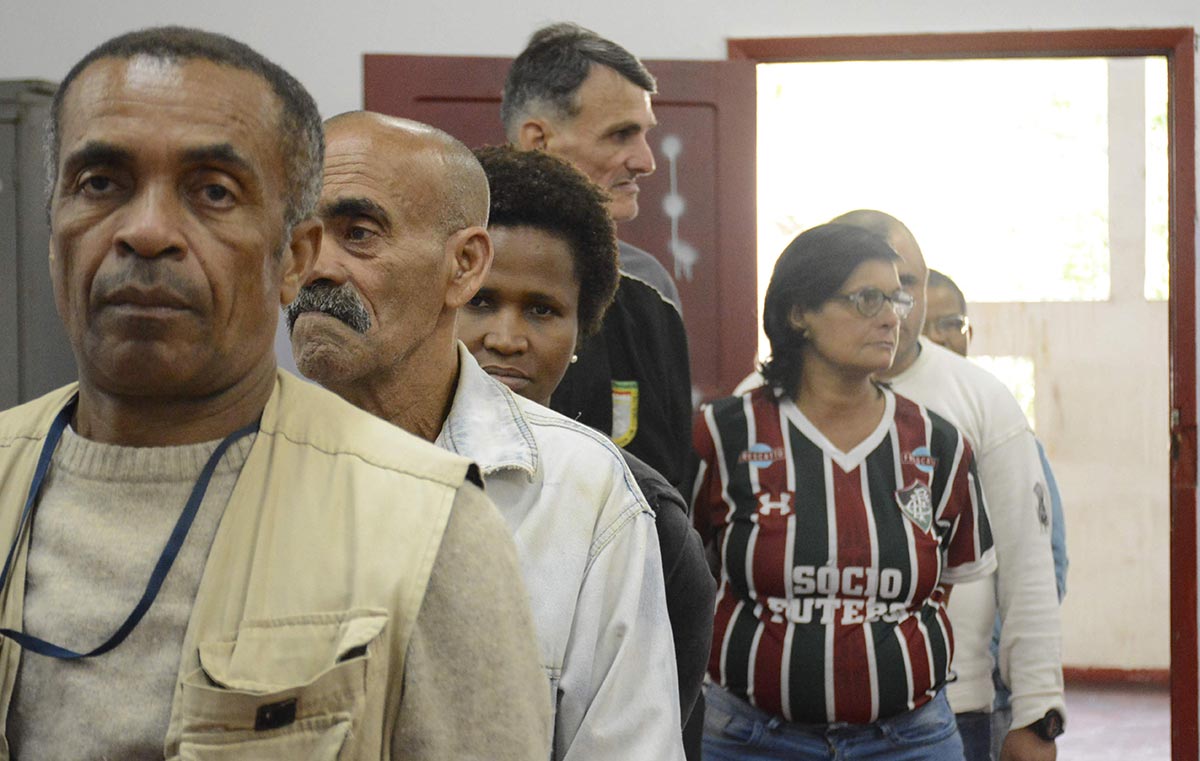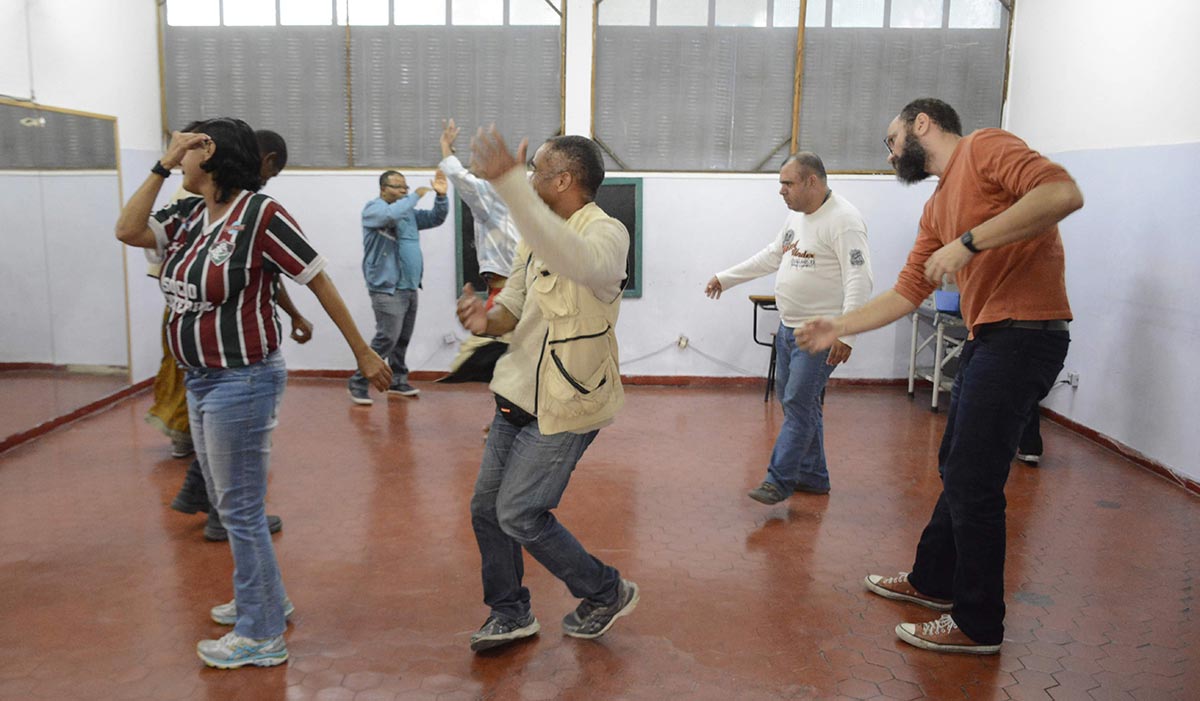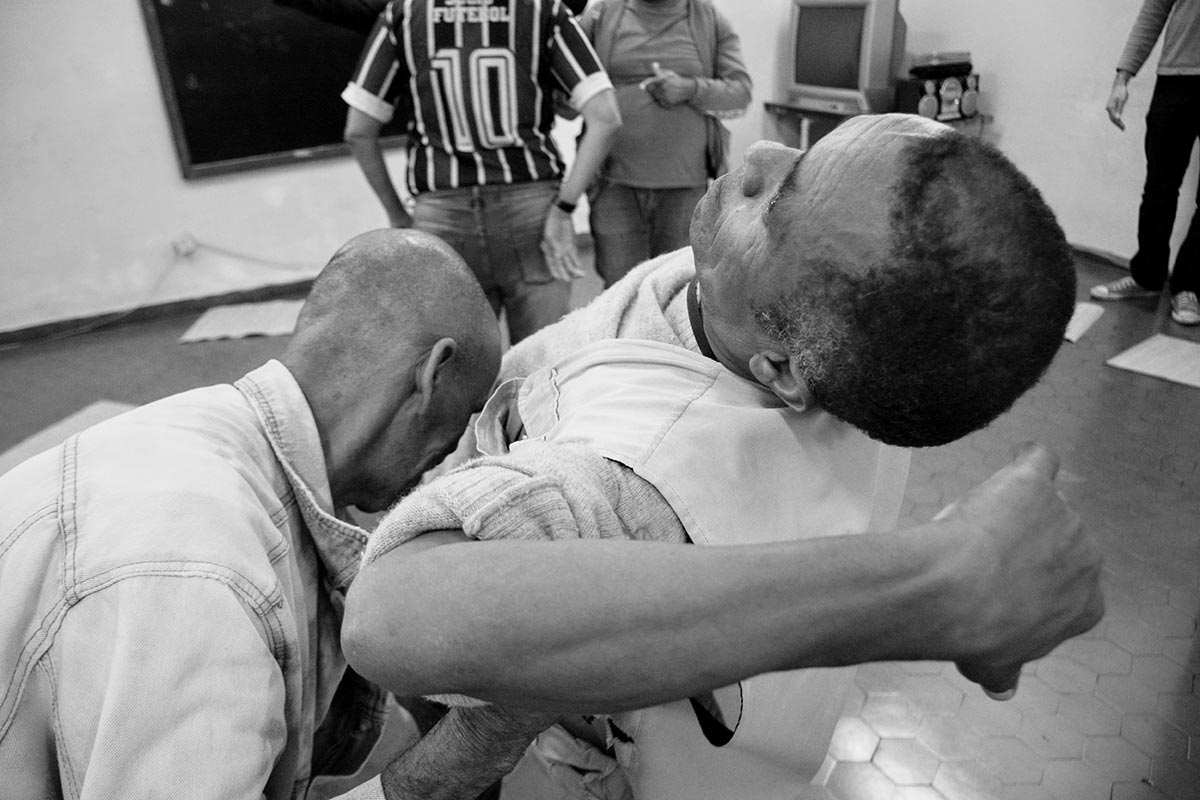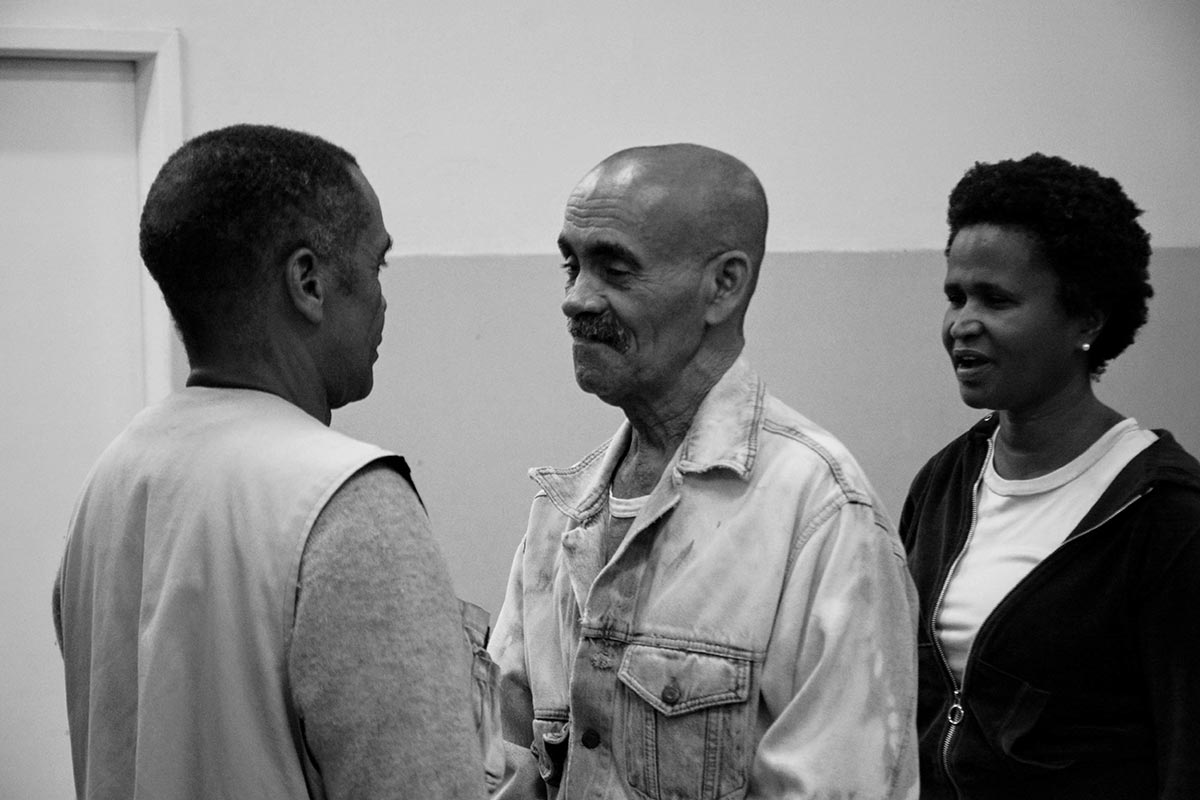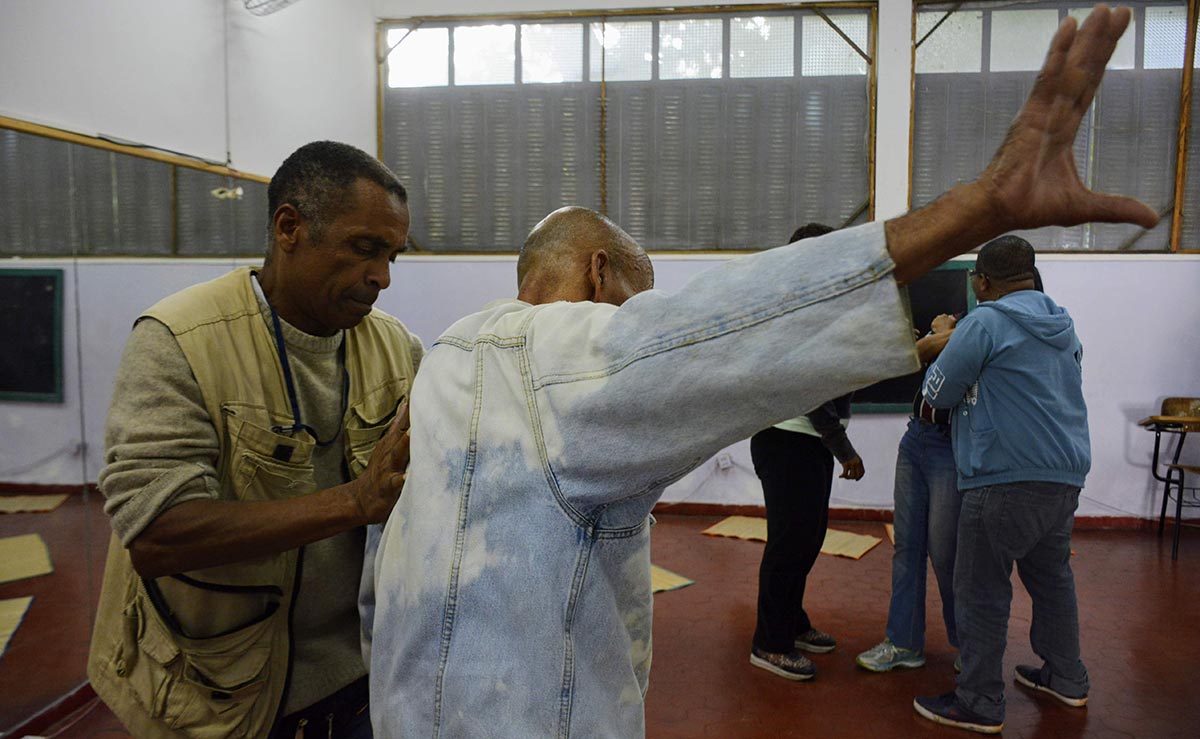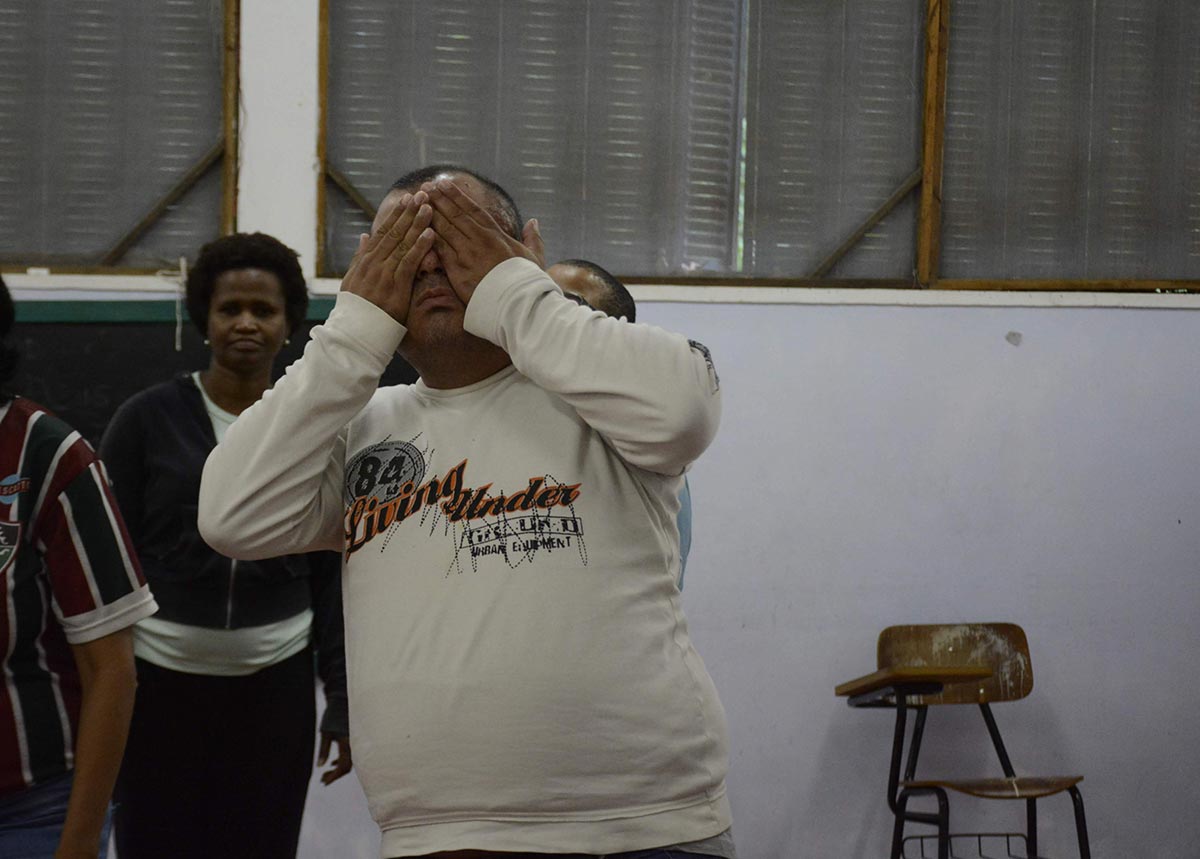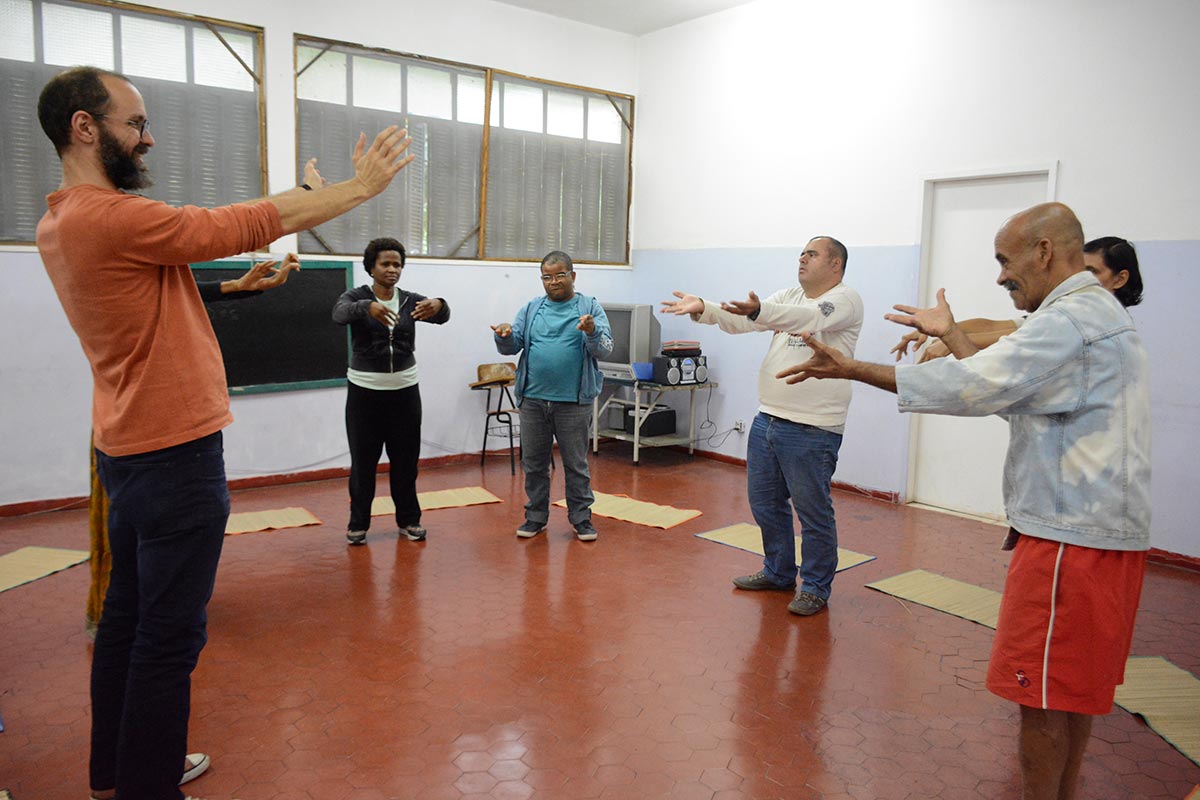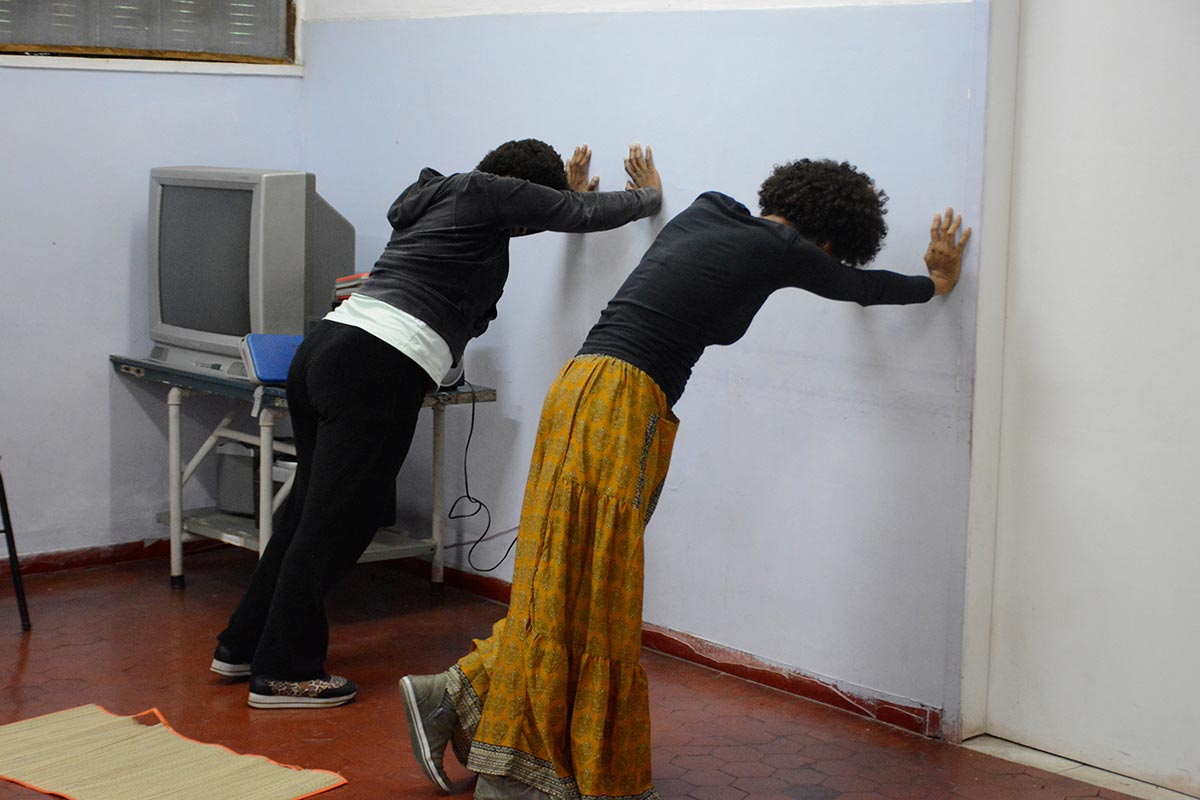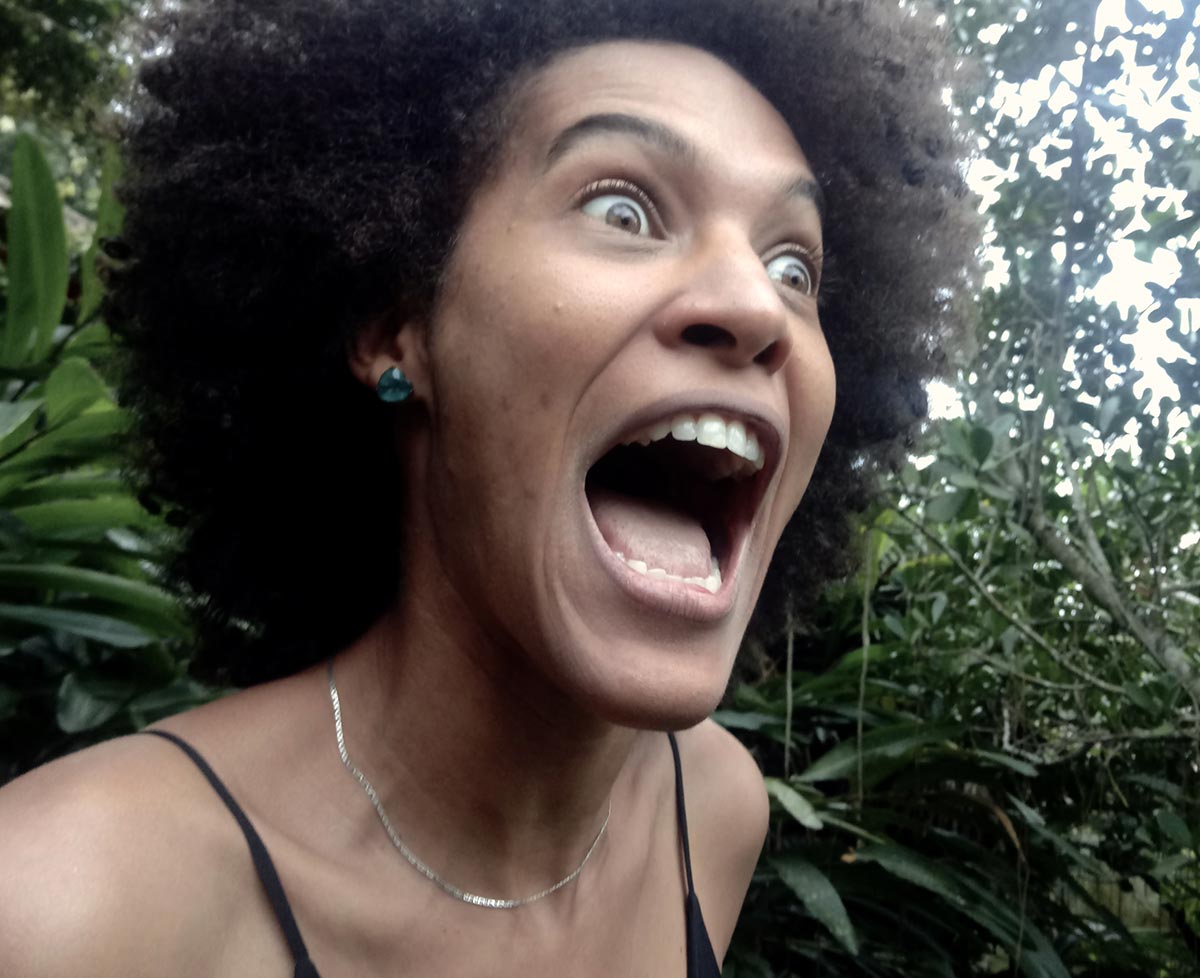
In Search of Judith: A Dialogue between Jessica Barbosa, Pedro Sá Moraes and Diana Kolker
1. Who is Judith?
Jéssica Barbosa
Santa Teresa, Rio de Janeiro, December 2017
Dad,
How are you? How is everyone there? We’re fine here. Cicero just completed two months of life. It’s been very beautiful to accompany the fast process of a baby’s development. I am completely dedicated to motherhood. Pedro’s support has been fundamental. He is discovering his fatherhood through experience. Yet, even though he is learning, he’s also fully assuming the responsibility and donation of a dedicated father.
Mom has been a great companion too. She arrived the week Cicero was born. She took care of the midwives – making food all night, washing all the blood-soiled bed linen after delivery, and dressing her grandson for the first time, in clothes and a cap made by her. At the time of delivery, I saw my sister Geane giving birth, I saw my grandmother Ideuza. Many of my friends were present there with me. And it was at that moment that I gained strength and Cícero was born.
Then mom came back here to spend Christmas with us. It could not have been otherwise. She brought with her a book: Offereço meu original como lembrança [I Offer my Original as a Memento] by Valter de Oliveira, husband of Nubia, my cousin, daughter of Uncle Antonio. I don’t know them yet, but I found the title of the book so beautiful … In that book I saw the photo of your mother Judith for the first time. Have you seen this photo? In a way I think I look like her, I see that Cicero has some of her features too. But I found her gaze a little sad.
I’m curious to know more about her. I think the women in our family reveal a little about who we are … and sometimes it seems that life itself is a search for who we are, for something that reveals, that accounts for things, that translates.
Where did Judith come from? What are the names of my great-grandparents? I remember you telling me when I was a child that she died in a car accident when you were a baby. I also remember you saying that you had not been breastfed and that a stepmother, Aunt Elenita, your father’s second wife, had raised you and her other four children with my grandfather.
I have decided to go in search of Judith. Of course, I know that in looking for Judith, in a present where she is no longer with us, is mainly looking for myself!
I love you, Jessica
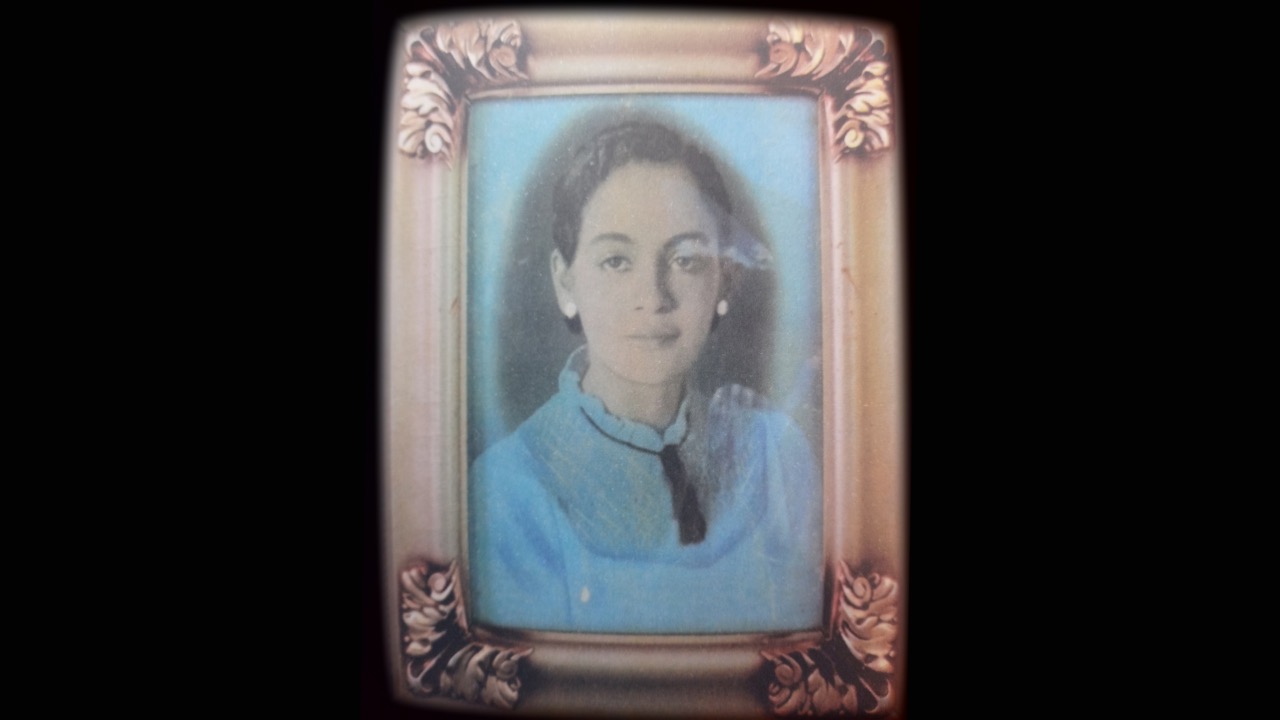
Pedro Sá Moraes Carvalho
Shortly after the birth of our son, Jéssica learned the true story of her paternal grandmother Judith for the first time. Finding this out amidst the pulsating beauty and fragility of maternal life, rubbed up against the limits of our sanity. The story of this mother, the mother of Jéssica’s father, removed from her son and committed to a mental asylum has now become unavoidable for us.
How many Judiths are there in the world, hidden away in the name of health or the law, with their selves torn apart? A couple with unconditional support from our family to celebrate every minute of our son’s childhood, we felt the scar of this mother, so close and so distant, and sensed the need to take on a mission to speak, through her, for so many injured mothers. To give voice to this the most fundamental of human urges, maternal love, outlawed by the world.
Judith was born in Rui Barbosa, a small town in the interior of Bahia. The story goes that she was abandoned by her mother and married Antônio Barbosa, a financial administrator of the municipal district of Jacobina, at a very young age. She had four children, then a pregnancy of twins who did not survive, and then another, Jessica’s father, after which she was taken to a mental asylum where she remained until her death.
Judith’s image makes me think of my maternal grandmother, Dona Zezé, who also married very young. They say that her husband was enchanted with her, leaning on the balcony of the home of her mother Balbina, seamstress of the Salvadorian elite, illegitimate daughter of a mill owner and slave-concubine. Young women from poor or low class families had no choice. If luck presented them with the interest of a man in a stable economic situation, they had to raise their hands and offer their bodies and future to them.
One day, a winning lottery ticket made my grandmother a landowner. Today there is a municipal school in Ipiaú, in the cocoa region of Bahia, named after her.
Perhaps only the lottery makes possible that, among so many Judiths, some become Maria José.
Diana Kolker Carneiro da Cunha
Julia Moura Rolim. Laden down with questions, silences, and missing details, I first learned her name through my father. Julia was his maternal grandmother. She was admitted to a mental hospital in Recife, when grandma was still a child. Soon afterwards, my great-grandfather Manoel remarried the daughter of the man who had welcomed and helped him on his arrival in Brazil. Born in Portugal, my great-grandfather came to Brazil on the run from his own father, a very violent man, a patriarch. Manoel was very grateful to this family that helped him. It was this same gentleman, who welcomed my father in Rio de Janeiro, when he moved from Recife to here.
At the time, I remembered a conversation with a friend, Laura Gallo, in the corridors of the history faculty, about women being committed to mental asylums, motivated by questions of moral and disciplinary order. A practice also deployed as an expedient means of facilitating economic interdictions, annulments of marriages, and redistributions of inheritances. It was a way of erasing women and removing from the scene those who got in the way of any ulterior motive.
A while later, my father sent a scanned photo. It was her, Dona Julia. She wore a white dress and a veil. The garment showed only her hands, her wrists, and her face framed by her black and smooth fringe, close to her eyebrows. I look at the photo and her eyes don’t meet mine. In her hands, an open bible and a rolled up rosary, hanging lightly. Was it her wedding day? She looked no more than 16 years old. Her features do not resemble the features of my father’s family, of Portuguese descent. What justified the hospitalization? What motivated it? Where was your family? Who were they? What was your life like? When did you die?
I learned that her medical record was lost in a fire that destroyed the institution’s archive.
Since 2017, I have been coordinating the pedagogical project of the Bispo do Rosario Museum of Contemporary Art (mBrac), located in the former Colônia Juliano Moreira, Rio de Janeiro, [Juliano Moreia Colony] one of the largest asylums in the country. Immersed in that territory, I have met many women and men who lived through the horrors of the asylum. One of the main responsibilities of the museum, in addition to the preservation, research and exhibition of its collection, the main part of which comprises the work of Arthur Bispo do Rosário, [artist and Colônia intern for almost 50 years], is to break with the logic of the asylum by working together with former interns, health services users, and the local community through programs integrating art, education, and mental health care.
One afternoon in 2018 Jéssica Barbosa came to mBrac to collaborate on the making of a short film. We met and talked about the projects of the museum’s Casa B artistic residency program. Shortly afterwards, Jéssica got in touch about a residency project that would support the development of a play, motivated by the recent discovery that her grandmother Judith had been interned at Colônia Juliano Moreira in Salvador when her father was just two months old. The discovery was made after seeing a book where Judith’s photo appeared. So, we set out Em busca de Judith [In Search of Judith].
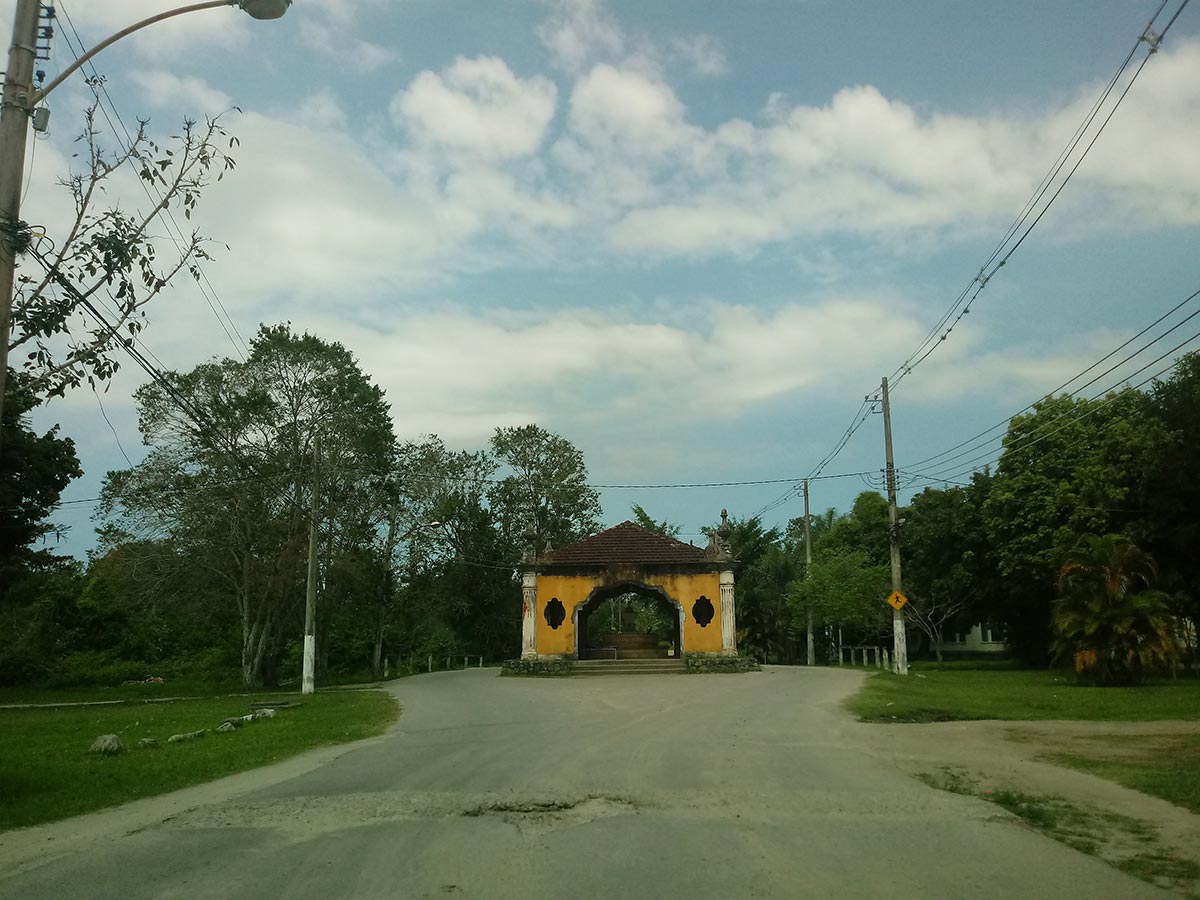

2. Why search for Judith?
Jéssica Barbosa
(a phone call from Salvador in early 2019)
Hi Diana, how are you? I am a little distressed. We tried to call the Colônia Juliano Moreira in Salvador to get information about what my grandmother actually had. It was a whole day of calls, waiting, finally to hear the news that the files were burned during a fire in one of the asylum’s buildings and that given the date of her death the files were lost. Then new versions of her story began to appear. And it seems to be a big puzzle that you won’t be able to put together. That they really erased this story and the way everything was done, it will be impossible to reconstruct. But I am here breastfeeding my son, you know? Wondering if when my grandmother was hospitalized, there was still milk in her breasts. And how hard it must have been for her, for my father, even though he was still a baby, for the older ones to have suffered this separation. Then I see an entire generation that fell ill, the generation of my father’s brothers. After my grandmother, two of her children also became ill. Many attribute it to her genetics, others to the fact that my great grandmother was a saint’s mother. That they went crazy because their grandmother was crazy and macumbeira [practitioner/leader of Afro Brazilian syncretic religious rituals]. You know? I no longer know the directions in which this search is going. But I see my grandmother’s story in so many other women, in many women who passed through Barbacena, in women who passed through the Colônia Juliano Moreira in Rio, in a cousin of mine who almost lived the same story as my grandmother, in your great-grandmother Júlia… And then, as much as I have the feeling that this play seems like it will never happen, because of lack of money, or lack of anyone to be with our son so that we can rehearse, because a producer told me that this story of talking about the crazy grandmother will not interest theaters and cultural centers… as much as this all seems true, I keep wondering: WHY LOOK FOR JUDITH? And then I realize that Judith is me, it’s you, it’s your Júlia, it’s Mother Celina de Xangô, it’s Leide Bonfim and her ancestors. My search is not for my grandmother, but for this feminine who was imprisoned as an animal, this witch power that was silenced. In fact Diana, I think that, in the face of our creative force, we are very close to God, or better we are God, better still, we are Goddess. And in fact, the search for Judith is the search for that feminine. I am sure that it was men who went crazy, always so full of reason, so lacking in intuition and delicacy. No comparisons, this doesn’t interest me. I think that looking for Judith is my own guarantee of health, it is ending certain cycles; it is having courage!
Pedro Sá Moraes
Rio de Janeiro, March 4, 1979
After a few years of absence due to painful misunderstandings, my birth brought my mother’s older sister to Rio de Janeiro, who had been her strongest maternal presence in her childhood and adolescence. Angela, you have a clean belly, she was supposed to have said on seeing the white boy in the hospital nursery, you have a clean belly, I listened to the story in my childhood as if it were a very funny joke, look how backward my relatives are, you have a clean belly, clean belly!
What is repeated, what we have escaped from, and what we return to is the territory. Jéssica comes from Bahia, the territory from which my mother’s family also comes – a family with dark skin, but socially and economically whitened.
In the only portrait of Judith to which we had access, the tone of her skin was painted until any trace of the black woman, daughter of a saint’s mother, was gone. In the portrait, she has a distant look in her eyes.
I am a white man. I grew up listening to and loving the samba that my parents played and sang at home and it was through samba that I trained as a musician, I hung out with the masters, learned about life. But it was only through Jéssica’s experience, the pain and the power of her ancestry, the connection between the future of our son and the past of her grandmother, that I realized the dimensions of the struggle that has spanned generations, and my responsibility as an ally. That’s why I’m looking for Judith.
Diana Kolker
You are crazy. What woman has not heard that phrase? There is now a term for this practice: gaslighting. And it is recognized as a form of psychological abuse, aimed at women, in order to manipulate, control, make one go crazy. In Brazil, until the middle of the last century, before psychiatric reform many women were committed to asylums until the end of their lives. Previously run by religious orders, these asylums became medical institutions driven by science. Asylums were a fundamental part of the hygienist and eugenicist project that guided urban reforms and the ideal of a modern Brazil at the beginning of the 20th century. As apparatuses they were designed to discipline the population in order to produce subjectivities useful to the desired societal model. They fostered ideas that there was a natural role for women – the condition of wife and mother – and a physiological condition of moral fragility, which would require greater control of their passions and emotions and produced a medical lexicon that pathologized those who escaped such models.
Historian Maria Clementina da Cunha, analyzing cases of women who were institutionalized in the early 20th century, points out that the symptoms presented as indicators of madness coincided with: independence, “intellectual hyperexcitation”, extreme dedication to their professions to the detriment of “natural inclinations”.1 The author also notes different patterns of institutionalization and treatment dependent on race, social class, and sexuality. Black women were the most affected in quantitative terms by the asylum institution and also in terms of “treatments” aimed at them. A situation informed by theories of social degeneration, very much in vogue in the country, with black women being three times more vulnerable due to their gender, race, and class.
Therefore, in searching for Judith we look for these women who had their lives stolen from them in the name of a nation project. Searching for Judith, we seek that this past does not extend into the present nor repeat itself in the future. In search of Judith, we take care of these open wounds, these pains, these losses.
3. Where to Look for Judith?
Jéssica Barbosa
Pedro Sá Moraes
Colônia Juliano Moreira, July 23, 2019
As part of our artistic residency at the Bispo do Rosario Museum, we organized a small series of meetings for artists, mental health users, and residents of the museum’s neighborhood, on the theme of creation and storytelling. The idea was to play with the boundary between personal reporting, invention, daily life and theater, voice and body.
A delightfully heterogeneous group, including some who had already become friends like Arlindo Oliveira and Ivanildo Sales, mixed with health professionals, collaborators, and mental health users … How to tell a story using body movements? How to repeat the physical story that someone else told? How to continue a story that a partner starts? How to link an imaginary outing to a heroic championship final?
We used to go to the Colônia to rehearse, talk to Diana and the friends we made at the Polo Experimental [Cultural Center for mental health users and community run by the museum].2 We would ask about the creations of Atelier Gaia [collective artist studio run by former interns]. We would connect to that magnetic space with our bodies, that still air of the West Zone, the cracks in the walls, the gazebo with its sleepy security officer, and the church, almost always closed.
On the wide lawn in front of the Polo, when there was no football, horses grazed unhurriedly – suburb of Rio de Janeiro, previously an asylum, a mill, and Tupinambá territory.
The river that passed in Jacobina, dragging Judith to a mental hospital in Salvador, also passed and still passes, now underground, beneath the Colônia neighborhood. In the neighborhood, hairdressing salons, one restaurant or another serving pre-made dishes, Minha Casa, Minha Vida [My House, My House (government housing program)] apartment blocks, evangelical churches, police. In the distance, the other side of the Massif da Pedra Branca [White Stone]. Deep river.
Sussex, March 28th, 1941
“Dearest, I feel certain I am going mad again. I feel we can’t go through another of those terrible times. And I shan’t recover this time. I begin to hear voices, and I can’t concentrate. So I am doing what seems the best thing to be do.”3
Like Ophelia, the archetype of the woman whose charming soul is shattered by the impact against the rock of a male world, Virginia Woolf fills her pockets with stones and dives into the River Ouse.
It is not in medical records, patient reports, or old hospitals that we will find Judith. We will never really know what led her to the asylum, what she experienced there, what the children experienced in their mother’s absence.
For this reason, we sought Judith at the bottom of the river, where Virginia and Ophelia dived, through which the Ship of Fools sailed, and even though, as Heráclito says, you never step in the same river twice, lives are not atoms, but recurrent instances of a flow between secular river banks, towards a future ocean.
Judith didn’t go; she is there. There we must look for her.
Diana Kolker
Jéssica seeks Judith in her own body, in her gestures, in her voice, in her image. Jéssica seeks Judith in her relationship with her son. Jéssica seeks Judith in her documents, traces, places, and displacements. Jéssica seeks Judith in her research and other/similar stories. Jéssica seeks Judith in the Colônia Juliano Moreira.
I search for Júlia in Judith. I am searching for myself too.
4. How to Search for Judith?
Pedro Sá Moraes
Since the theme is necessarily artistic and personal for both of us, the next and most delicate question would be what method and form could we give to this search. Shortly after the investigation began, Jéssica invited me to be the playwright and director for the play. A permanent witness, in peaks and valleys, of her trajectory, reflections, and affections, I was the only person close enough and involved enough to translate this search into proposals for word, sound, and scene. Close enough that the criss-crossings were also mine, the discomfort, the urgency, were also mine. And also so that Jéssica, at all times, could keep her hand at the helm, say yes, no, here, there … That’s it!
Months after the start of the process, we were in Bahia, and some conversations with relatives revealed a tangle of narratives that, if they helped to give life and color to a hitherto diaphanous picture, also showed us that the truth “as-it-is” was hopelessly lost. Of the documents, there remained a photo and a letter from the social worker at the asylum sent to Jéssica’s older aunt relating her mother’s death. In addition to this, there were versions, stories, second or third hand reports, riddled with interpretation or prejudice, made true by repetition or the need for meaning. A well-known phrase by Walter Benjamin (who ended up being cited at the opening of the second act) became a kind of north [for us]: “Articulating the past historically does not mean recognizing ‘the way it really was.’ It means appropriating a memory as it flashes up in the moment of danger.”4 So, the meaning would not need to be grounded in what was, but rather in what is, in the present of Jéssica and Pedro and the country around us in danger of becoming an internment camp again.
“A child in the dark, gripped with fear, comforts himself by singing under his breath;” note Deleuze and Guattari.5 Diving into the fragments of reports, the arbitrariness, and suffering that mark Judith’s life is a dangerous, sometimes terrible, proximity to chaos. At the same time, it would not be fair, useful, or respectful to deal with this existence lightly or abstractly. Searching for Judith means being prepared for the violence of reality, as Artaud claims, putting the cruelty of life on the stage, “this kind of tangible laceration, contained in all true feeling […]”6 The structure we found to support this endeavor, often walking in the dark, without a compass, under thick fog, was the song. The song, although strange, is a kind of stable center in the midst of chaos. Through the musical principle of rhythm, cyclicality, a territory is established, which is also the place from which one can leave, lose oneself, take risks for the territory of difference. When a crack opens in the circle, or when we go off improvising, we launch ourselves against the world, against the forces of the future, “one ventures from home on thread of a tune”.7 Jéssica requested, and continues to request, that the telling of the story, the uninterrupted thread of blood that oozes from this history that was and is, that I answer with verses, notes, and rhythms which are simultaneously the place of reflection and rest in order to move on.
It was as a composer that I built a good part of my artistic career. The exercise of the song, the search, within the cyclicality of the song, for escapes, surprises, and ruptures, be it for an unusual harmonic chain, the less obvious rhyme, or the dissonant note, were for decades the core of my artistic identity, my center amidst the chaos of the world. Until, around 2016, I realized that the bedrock of my will to create was deeper and wider than what could be found in the artistic space reserved for songs – whether phonograms, concerts, video clips … It was in 2016 that Jéssica and I spent a few months in an artistic residency in the United States, under the guidance of Marina Gregory, exploring “physical actions”, according to the concept developed by Jerzy Grotowski. During this experience, we practiced songs from Afro-Caribbean traditions on a daily basis, in which the Polish master had discovered a unique potential for global integration of body movements together with a kind of asceticism independent of religious affiliation – a meaning he called “verticality.”8 We sang and sang and the body moved, more and more free, moved by very internal, organic, global subtle impulses.
Returning to Brazil, I knew that my next steps could neither move away from music nor the expanded field of theater. Between 2017 and 2018, under the direction of the Argentine master of theater Norberto Presta, I staged a solo based on an adaptation, drawing on song and spoken voice, for Julius Cesar by Shakespeare. Reflecting on the creative process of staging, Norberto and I decided to ground what we would do in theater-song. A form of dramatic staging in which all actions, characters, dialogues are driven by musical meaning and rhythm, and each song is imbued with intentions and establishes relationships. The show circulated in many Brazilian cities, often accompanied by workshops, in which I (at times with Norberto, more often than not alone) led artists through the physical-vocal process that is today the backbone of my personal artistic practice.
When Jéssica invited me to share with her the creation of Em Busca de Judith, as playwright and director, it was out of interest in this language and this way of working – between the sung voice and the spoken voice, between the colloquial and verse, with a musical meaning and rhythm transforming every speech into a song, every song into action, every movement into dance.
From the point of view of dramaturgical composition, what we have been experiencing is a circularity between three interrelated elements: an original point that comprises Jéssica’s reflections, experiences, and impressions in the search for her grandmother’s story; the songs, whose seeds often hatch unexpectedly and introduce a field of reflection and crisscrossings where I place myself most, as an artist, as a father, as a citizen; and a third operation that aggregates and organizes these elements with other speeches, echoes, myths, and acts seeking to create an arc of meaning that is indeterminate but present.
The result is necessarily fragmentary. And we think it’s good that way. French theorist Jean-Pierre Sarrazac proposes the concept of rhapsody to describe contemporary theater.9 According to the etymology of the word, rhaptein, the rhapsode [or in more modern usage rhapsodist] is the person that weaves, adjusting songs, passages, and disparate and heterogeneous elements. Rhapsody is opposed to the Aristotelian concept of good drama as a “beautiful animal”, neither too big nor too small, in which all parts fit together in a logical and necessary way, without the author’s perspective appearing as such. 10 In rhapsody, the seams are visible, and the artist’s gaze, choices, ethics, the artist’s reflection are also visible. There is no illusion of impartiality or transparency, there is no search for absorption or absolute enchantment, but reflection, questioning, and shared action. As in a ritual, there is no audience; everyone is a participant.
Ritual is one of the main keys to understanding contemporary dramatic experience. Researchers such as Eugenio Barba,11 Richard Schechner,12 and Jerzy Grotowski have described the similarities between contemporary performing arts and ritual experiences of a multitude of different cultures. More than simply reporting parallels, some of these masters advocate a relationship of emulation or direct learning with the ritual forms of ancestral cultures as a way of bringing the performer to a state of amplified, strengthened presence, capable of crossing frightening obscurity and blinding light without missing a step.
A few months ago Jéssica, after repeated confrontations, during rehearsals, with the frightening and destabilizing aspect of the presence of Judith and so many Judiths from yesterday and today, came to the conclusion that the only viable way to undertake the crossing would be to live it as a ritual. Pay the respect due, in an alert and disciplined manner, to the spirits that pass through us and are the very consistency of our social and individual reality in their subconscious strategies. “It’s an ebó,” said Jessica. [Ébo is a ritual offering to Afro Brazilian deities]. What we are doing is an offering for my grandmother, for my great-grandmother Francisca, for all Judiths, it is an Ebó.
Thus, we discover that Em busca de Judith is an Ebó. An Ebó-Rhapsody.
Within the field of African-based religions, the song and the body move according to a fundamental element, that which establishes the state of transcendent communication – and this element is the drums, it is the rhythm.
Also in Western theater of the 20th century – which corroborates the parallels made in the field of theatrical anthropology – rhythm is also a crucial element for the composition and the work of an actor. Stanislavski, at the beginning of the century, called tempo-rhythm a kind of pulse that underlies the internal emotions and external actions of each scene.13 Each character, speech, dialogue, is characterized by a tempo-rhythm, which is revealed both in the way the syllables and pauses are distributed, as well as in their relationship with physical movements, breathing, the other… The tempo-rhythm, for the Russian master is a fundamental part of what gives life, organic and three-dimensional emotional consistency to a scenic event. Based on this concept of tempo-rhythm, seeking to work with Jéssica on the relationship of music (audible or inaudible) with the lines, movements, intentions of the show, I developed a composition script, which we have been experimenting with in rehearsals over the past few weeks. This is not yet a defined methodology, but a search, a back and forth grounded in the relationship between music and the oral-corporeal dimension, to discover deeper layers of the sense of the spectacle for us to approach Judith. Here are the steps for this method.
During many and many rehearsals, Jéssica and I (sometimes playing guitar) discovered the contrasts, the “climates”,
1 – The tempo-rhythms of each of the words and phrases and excerpts from the first scenes.
2 – From recordings and from my memory, I recorded a musical base and a guide voice, so that Jéssica could study the text in a precise relationship with the movements of the music.
3 – Jéssica studied and practiced the rhythm of the text, discovering the subtleties of the relationship between this rhythm and her body movements.
4 – So I brought to the rehearsal a new audio track, with all the musical events, but without my guide voice, and Jéssica worked on this track, developing the body-voice narrative about a musical pulse (or several pulsations) already established and internalized.
Em busca de Judith is the first show that I sign as director, and I recognize with immense affection the confidence that Jéssica places in my eyes and words. I constantly listen to her questions, concerns, and discoveries. I try, with each song, with each scene, to be less of an author and more of an antenna, an organizer of affections. But I know that as the process progresses, the search for Judith is an increasingly more mine as well.
Diana Kolker
I only have the account of my father, an image and the memory of a handwritten document, which I lost in amidst digital files. I searched for Júlia’s image and sent it to family members with the question: do you know who this is? Most had no idea. To the few who recognized it, I asked them to send any clue, document, information, report, memory. I find myself trying to sew up scattered information, assumptions, fragments. The effort to erase this woman, who made life possible for us, left a hole. This hole is an open wound that we don’t know where it is, but it ignites. Grandma confided to my father her outbursts of sadness and loss. Dad kept that absence and gave it to me. “What are you going to do with that?” – he asked. “Get Júlia” I said. Take care of her. In searching for Judith, I seek Judith, I seek Júlia, I seek Jéssica, I seek Mariinha, I seek myself.
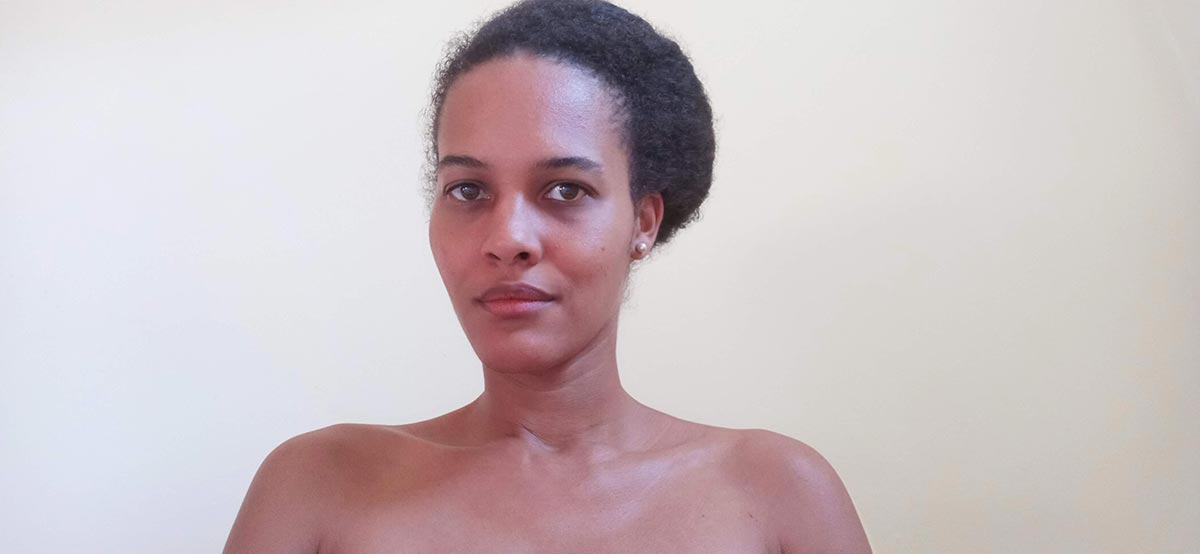
***
Diana Kolker Carneiro da Cunha
Pedagogical curator at the Bispo do Rosario Contemporary Art Museum, where she coordinates the institution’s artistic-pedagogical project including programs such as Casa B and Atelier Gaia, in addition to curating and mediating exhibition programs. She holds a masters degree in contemporary studies of the arts from Universidade Federal Fluminense (UFF), a specialist degree in art pedagogy from Universidade Federal Rio Grande de Sul (UFRGS) and a bachelor’s degree in history from Puc Rio.
Jéssica Barbosa
Bahian actress, has a theater degree from Escola Martins Penna and a dance degree from the Angel Vianna Faculty. Her professional debut was with the movie Besouro (2009), winning the award for best actress at the Black Film Festival of São Paulo. Also in cinema, she has participated in feature films such as Na Quebrada, Mormaço and O Pai da Rita. In the theater, she has worked with great directors such as Aderbal Freire Filho and Marco André Nunes. She directed and co-directed the short films Cicatriz (2017), A Namora-deira (2019) and (re) treatment (2020). She is resident artist at the Bispo do Rosario Museum since 2018, where she developed the solo Em busca de Judith.
Pedro Sá Moraes Carvalho
Winner of the 2016 Professional Music Award in the Best National Singer category, actor and musician has released four CDs and completed dozens of international tours. Since 2005, he works in-between music and the performing arts. Directed by Norberto Presta, he debuted in 2018 the solo A Paixão de Brutus, an original adaptation of Shakespeare’s Julius Caesar for the language of theater-song. The research on this language continues to unfold in Em busca de Judith, where he is both playwright and director. He is currently studying for his doctorate in performing arts at UNICAMP.
1 Maria Clementina Pereira Cunha, “Loucura, gênero feminino: As mulheres do Juquery na São Paulo do início do século XX” Revista Brasileira de História (São Paulo, v.9, nº18, ago./set., 1989)
2 Editor’s Note: Administered by mBrac, the Polo Experimental is an cultural community center that via the idea of togetherness, integrates cultural actions in the Colônia in an old remodeled Pavilion transformed to house the activities of: Escola Livre de Artes (Free School of the Arts – ELA); Casa B (Home B – artistic residency); Atelier Gaia; the income generation project Art and Garden Company and the leisure program Pedra Branca (White Stone.)
3 Virginia Woolf, “Suicide Note: A Painful and Poignant Farewell (1941),” available: http://www.openculture.com/2013/08/virginia-woolfs-handwritten-suicide-note.html [Accessed August 2020]
4 Walter Benjamn, “On the Concept of History” in Walter Benjamin. Selected Writings Vol. 4 (1938-1940) eds. Howard Eiland and Michael W. Jennings (Boston: Harvard University Press, 2006) 389 – 400, 391.
5 Gilles Deleuze and Feliz Guattari, A Thousand Plateaus: Capitalism and Schizophrenia, translation Brian Massumi (Minnesota: University of Minnesota Press, 1987) 311.
6 Antonin Artaud, The Theatre and Its Double, translation Victor Corti (London: Alma Classics, 2013) 61.
7 Thousand Plateaus, p. 313.
8 Jerzy Grotowski, O teatro laboratório de Jerzy Grotowski – 1959-1969 (São Paulo: Perspectiva, 2001) 232-237.
9 Jean-Pierre Sarrazac et al., org., Léxico do drama moderno e contemporâneo (São Paulo: Cosac Naify, 2012). 126-130.
10 Aristoteles, Poetica (Lisboa: Imprensa Nacional/Casa da Moeda, 2010) 113-114.
11 Eugenio Barba, A Arte Secreta do Ator (São Paulo: É Realizações, 2012).
12 Richard Schechner, Between Theater and Anthropology (Philadelphia, University of Pensilvania Press, 1985).
13 Konstanin Stanislavski, An Actor Prepares (Reddich: Read Books, 2015) 279.


